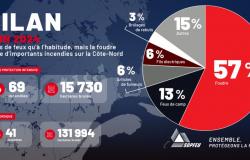This robot could even jump up to 200 meters high on the Moon.
Impressive advances in robotics
Researchers at the University of Manchester have developed a robot that can jump to spectacular heights. The results of this research, published in the journal Mechanism and Machine Theoryshow that the robot can jump up to 120 meters on Earth and 200 meters on the Moon. Currently, the robot that can jump the highest can reach 33 meters.
Designed to explore difficult terrain, this robot uses cylindrical, prism-shaped legs and extendable springs to maximize the transfer of elastic energy into kinetic energy.
This robot could thus overcome obstacles that traditional robots cannot, making it possible to explore caves, dense forests and potentially other planets.
Prismatic legs and structural optimization: technical challenges overcome
Previous designs of jumping robots tended to waste energy by moving sideways or turning, which limited their jumping height. The Manchester team solved these problems by combining the best elements of prismatic and rotating designs.
The prismatic system consists of legs that move vertically like pistons, while the rotary system uses a circular motion similar to that of a kangaroo’s legs. The use of prismatic legs allows for maximum jump height, while avoiding the early departures seen in previous models.
Additionally, by reorienting the robot’s center of gravity upwards and optimizing the lower structure to make it lighter, the researchers were able to not only increase its stability, but also significantly increase its energy efficiency.
Jumping robot: a promising innovation for space missions
The potential applications of this robot are vast. In addition to exploring terrain inaccessible on Earth, it could play a crucial role in space missions.
To demonstrate the feasibility of their design, the researchers built a small-scale prototype measuring 40 cm that can reach 1.6 meters in the air. According to John Lo, a space robotics researcher at the University of Manchester and co-author of the study, “Our design significantly improves the energy efficiency and performance of spring-loaded jumping robots ” he said in a statement.
Researchers are actually considering developing more compact versions of the robot for space missions, making this technology very useful for space exploration.






